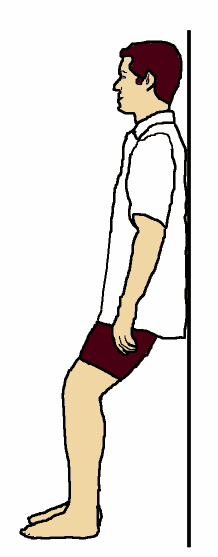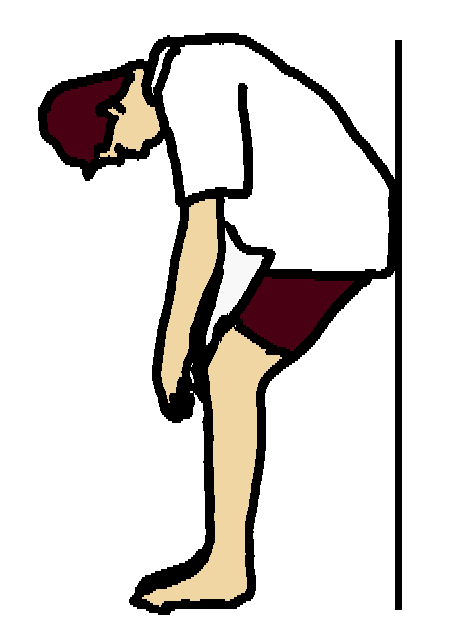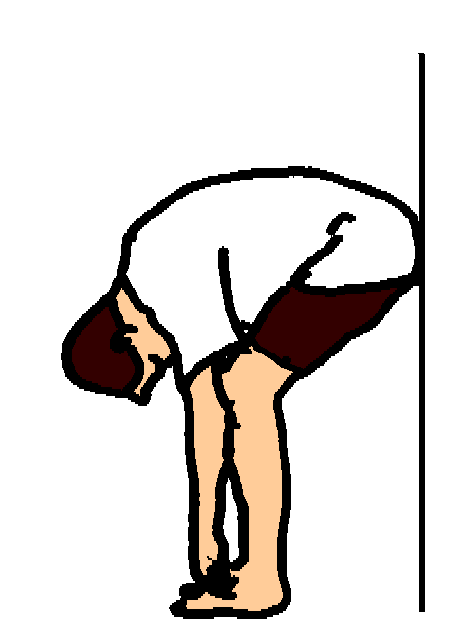|
|
|---|
|
Note: severe back problem (especially disc related), seek professional advice first.
Minor back pain, proceed slowly & carefully.
Roll Downs:- Start Position
- "Sit" with your back to the wall and your feet about 40 cm from the wall.
Feet hip width apart with their inner sides parallel, and knees bent.
- Pelvic neutral, tailbone lengthening down, long spine, scapulas anchored.
- Form your foot arches, and check that your knees are passing over your feet,
not inside of them.
Roll Downs:- Action
- Strong zip & hollow, and (breathing in), lengthen up through the spine & release the head and neck.
- (Breathing out): Let your chin drop onto your chest and the weight of your
head "wheel" the rest of your spine off the wall. Arms hang loose. Knees soft & remaining
wide (not collapsing inward). If your back is sore,
try sliding your hands down your thighs.
- (Breathing in): Let your arms and head hang.
- (Breathing out): Tuck your tail bone in and your pubic bone forward, & (remain
firmly zipped and hollowed), slowly wheel your spine vertebra by vertebra back onto the wall.
- Repeat 4 to 6 times.
(Scroll right>>>>....)
|
Roll Downs:
|
Start Position

|
Action


|
Comments
Wheeling the spine is a core Pilates concept. When done slowly and cautiously, it is safe, and
will help to free and release any intervertebral joints that are clenched together by muscle spasm.
|
What it does
- "Wheels" the spine, thereby getting each intervertebral joint to contribute equally to the
work of bending.
- At the same time, the hip joints bend or flex, contributing to the total flexibilty that you need to
safely pick up objects.
-
There is however one downside in that it may promote "Lumbar flexion syndrome" (ref 1).
This exercise should therefore be used alongside the squatting exercises which strengthen the gluteals
and promote co-ordinated movement patterns between the hip joint and the lumbar spine.
Watch Points
- Do not sway over to one side.
- Always keep the foot arches formed and the knees over the feet!
Reference
- Shirley A Sahrmann: Diagnosis and Treatment of Movement Impairment Syndromes;
Publ. Mosby 2002
© Bruce Thomson, EasyVigour Project
scroll up^^^^.....
|


